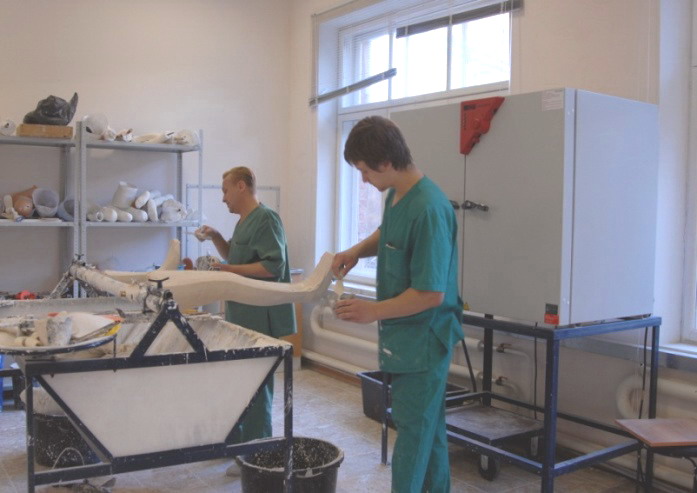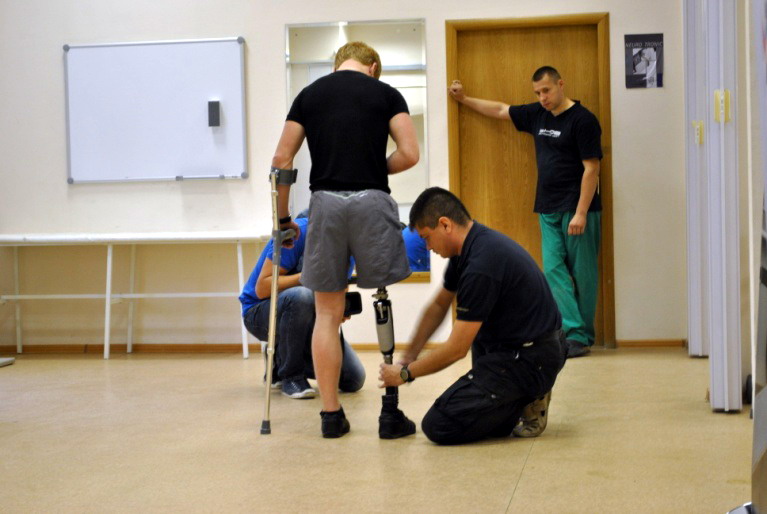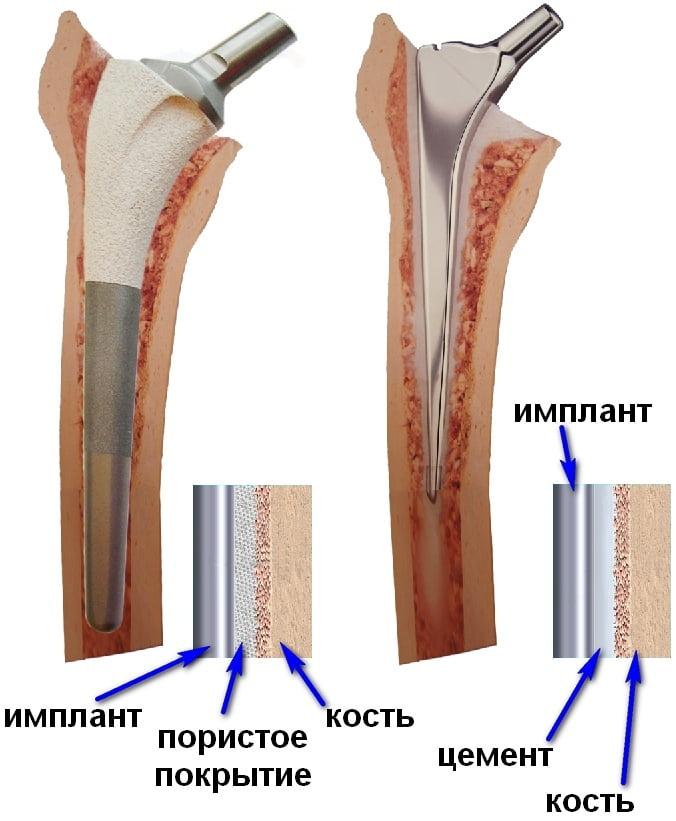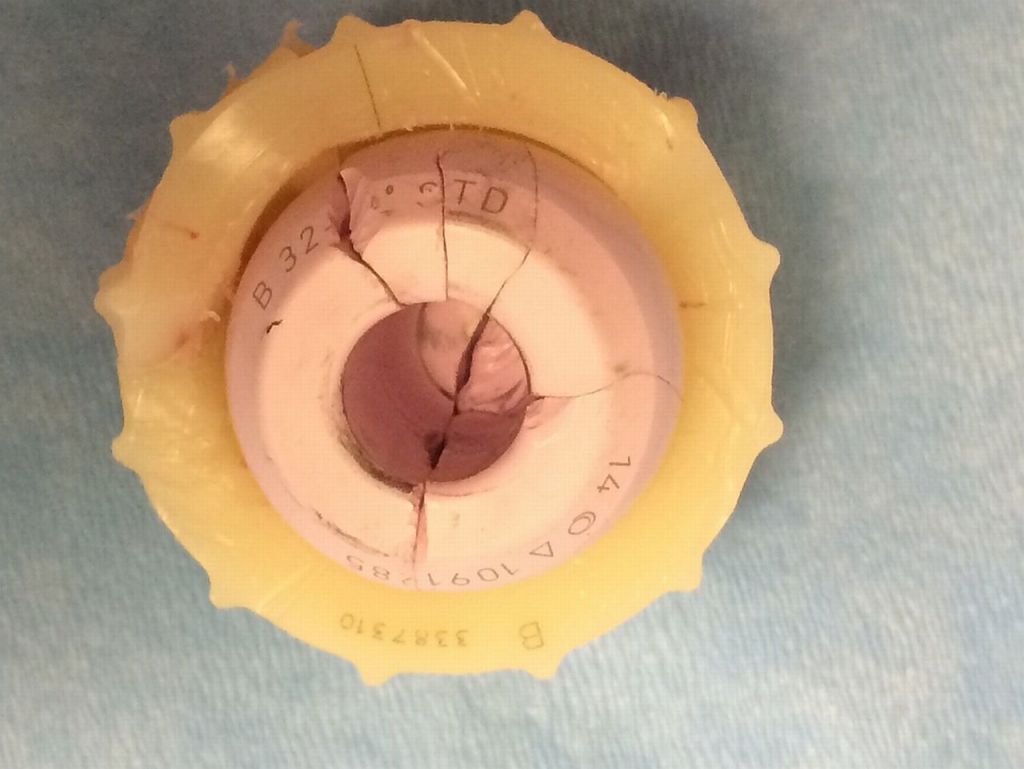So that you can return to your normal life as quickly as possible, great importance is placed on restoring your ability to stand and walk. Coordination exercises, building muscle mass, training with the prosthesis, learning how to walk correctly and practicing everyday situations.
- Prostheses after an amputation
- How dependent are prostheses on imports?
- No imports like no hands - how the sanctions affect the prosthesis manufacturers
- ABOUT ORTOPORT
- frequently asked Questions
- Incapacity and IPRA processing
- Choosing the type of care for your prosthesis
- MOSCOW CENTER OF PROSTHETICS AND REHABILITATION
- Stump diseases after amputation include:
- prostheses
- Delivery and payment
- How the prosthesis is adjusted
- The hip joint: the price of an artificial joint
- Oncological endoprosthesis
- Native prostheses
Prostheses after an amputation
Those who can move and use all parts of their upper and lower limbs without assistance do not have to think about what their life would be like if they lost a limb or an arm. Even the loss of part of a limb, not to mention the complete absence or loss of both arms or legs, changes everything fundamentally - the person can no longer work properly and do the things that they did with ease when healthy.
Thanks to advances in medicine and technology, this problem can now be solved. As is well known, prostheses have been used by specialists for many years. Modern arm and leg prostheses are so different from their earlier predecessors that they give the above-mentioned group of people a completely new perspective on their changed situation after the amputation. Thanks to modern designs, the lives of people who have lost a limb or several limbs can be made much easier, allowing them to get as close as possible to the conditions that existed before the fateful operation.

Prosthetics is a special type of treatment that partially or completely replaces the form and function of an organ that has been damaged by injury or illness or that has been pathologically altered by a congenital defect. It is closely related to orthopedics, traumatology and reconstructive surgery.
The development of prostheses and orthopedic products is based on advances in physiology, electronics, mechanics, biomechanics, electromechanics, chemistry, physics, mathematics and other scientific fields. Many designers around the world are working to develop and improve various products for people with disabilities. Currently, enormous progress is being made in this field, in particular with the introduction of so-called bionic prostheses, which are as close as possible to the natural limbs given to humans by nature. Researchers are actively working on a feedback loop that will allow human prosthetic wearers to experience tactile sensations when an artificial hand covered with a special prosthetic skin touches a specific object.
How dependent are prostheses on imports?
In Russia, almost all types of prostheses are made using imported equipment. Timur Sayfutdinov, founder and CEO of MaxBionic, says that even the production of 'semi-finished products' is heavily dependent on foreign components. – Fragments of prostheses, which in the future will be tailor-made for a specific person, are heavily dependent on foreign components. 'We buy micromotors and electronics from abroad to produce bionic hand prostheses. At the moment they are hard to get, the waiting list is six to 12 months. I have to pay a 100% deposit and wait another year or so. As a result, there are huge queues for prosthetics and the production facilities are unable to cope.
Local equipment and materials are also used, but primarily for the manufacture of simple, cosmetic hand prostheses. Some domestic materials are also used for prosthetic legs, but there is a nuance here. According to statistics cited by experts interviewed by AIDS.CENTER, the leg is most often amputated above the knee, and the knee module is the main component of the prosthesis. Prosthetic legs mainly use imported 'knees'. There are also Russian products, but they are inferior to foreign products in terms of their characteristics (mobility, durability, ease of use). When a person has a choice of which manufacturer to commission to produce prostheses, he chooses foreign companies.
Eliners, ie stylish inserts for dentures, are also dependent on imports. Even functional and expensive prostheses have the disadvantage of being repulsive. People with dentures feel uncomfortable in short sleeves or shorts, they feel uncomfortable in the gym or on the beach. The decoration uses contoured polymer overlays that can be 3D printed. It is not a particularly knowledge-intensive product to produce, but it is also purchased abroad.

No imports like no hands - how the sanctions affect the prosthesis manufacturers
With the outbreak of armed conflict in Ukraine, Russian prosthesis manufacturers are struggling with delays in importing components.
According to Timur Sayfutdinov, some Icelandic and American materials are no longer available - the companies have completely stopped cooperation with Russia. Deliveries of German and Turkish components are delayed – the delays have doubled. Logistics were interrupted - many flight connections were stopped. The crisis in 'intermediate' components coincides with the global crisis in microelectronic components.
ABOUT ORTOPORT
'Ortoport' is a group of companies consisting of the private clinic KDS Clinic, which cares for patients, and the production company Vega Ltd, which specializes in the individual production of prostheses and orthoses.
Ortoport' offers individual production of prostheses for everyday life, work and sport. We will manufacture your prosthesis in the shortest possible time.
'Ortoport' works in Russia with the support of specialists from the USA, France and CIS countries.
frequently asked Questions
Our goal is to make modern technologies more accessible to people with disabilities. Ortoport is committed to introducing and using new technologies that significantly improve the properties of accessible rehabilitation devices. Modern technologies are used in the manufacture of our prostheses, which facilitate the design of the prostheses and improve their functional properties.
According to the current Russian legislation, all categories of disabled people with an individual rehabilitation program are entitled to free technical rehabilitation equipment and prosthetic and orthopedic aids.
We offer you the opportunity to receive prosthetic aids as compensation. You can pay for the prosthesis with your own funds or with an interest-free loan from a bank with subsequent compensation from the Social Security Fund. You will receive your prosthesis within a very short time (between 5 days and 1 month, depending on the complexity of the work) and will receive compensation from the Social Security Fund after the prosthesis has been manufactured.
Note: The amount of benefits depends on the region; Please check with the local social insurance fund/regional social assistance center where you live (for Moscow residents).
Modern modular prostheses give amputees back the joy of movement. The prosthetic components are made of modern, lightweight and durable materials. This has a positive effect on their functional properties and allows patients to walk again. In the initial phase of handling the prosthesis, support with crutches and later with a cane is necessary. Over time, users can become proficient so that they no longer need crutches or a cane.
The learning time differs significantly between tibia and hip prostheses. You can usually master a tibial prosthesis within two to three weeks. With a hip replacement, learning is more complicated. The adjustment period for a hip prosthesis is between 3.5 and 5 weeks. According to the leading prosthesis centers and research institutes of Russia, the learning time can vary and depends on the general condition of the patient, his age, the quality of the prosthesis and training.
Incapacity and IPRA processing
Go to the Medical Social Assessment (MSE) office at your place of residence with the referral received from the polyclinic and our ITC report. Alternatively, you can apply for an MSE electronically through the Unified State Services portal. There is already a special form in the corresponding section. Based on the results, you will be declared disabled and an individual program for the rehabilitation or habilitation of a person with a disability (IPRA) will be drawn up. Danger!!! Make sure that our recommendations are taken into account when drawing up the IPRA and that you receive all the necessary technical rehabilitation resources.

Choosing the type of care for your prosthesis
Decide which type of care is right for you:
1. a national treaty.
2. on an offset basis
Orthokosmos works with the best Russian and foreign manufacturers, who assemble prostheses from modules suitable for the patient.
The choice of products for patients is unlimited. We work with the best Russian and foreign manufacturers who assemble prostheses from patient-friendly modules.
At ORTOCOSMOS you can compare accessories from different companies. The company's specialists will help you choose the best product from the entire offer, taking into account individual characteristics. After amputation of a limb, the functional state of the body changes significantly, and the sooner a prosthesis is made, the better for the patient's physical and mental health.
The prosthesis should be made when the stump has completely healed: all sutures have been removed, the surgical scar is no longer crusted and there is no risk of the stump being stretched by axial loading. On average, this takes three to four weeks after the amputation if the healing progresses well.
A prosthesis technician makes a plaster cast of the stump in consultation with the treating doctor. Beforehand, the stump is examined, bony protrusions, soft tissue defects or hypertrophies, the condition of the surgical scar, the extent of movement in the ankle joint on the shortened side and much more are taken into account. Based on the evaluation of all this data, the prosthetist creates an individual stump joint socket according to a previously agreed and optimally adapted set.
Modern prostheses are technically highly developed products. They have integrated microprocessors and can be programmed for a natural gait or hand grip.
In addition to the electronic modules, the high-quality and professional workmanship of the stump shaft plays a special role.
The stump connects the rest of the limb to the mechanical parts of the prosthesis. The Orthocosmos prosthetists make the stump shaft by hand based on an individual impression for each patient.
MOSCOW CENTER OF PROSTHETICS AND REHABILITATION
The Moscow Rehabilitation and Orthopedic Center has been engaged in prostheses for the lower limbs for ten years. The ROC manufactures a wide range of modern modular prostheses using high-tech modules from the Icelandic company Ossur and the German company Otto Bock. In addition, the center's specialists use proven modules from the Russian company Metiz for the production of inexpensive prostheses. These manufacturers are constantly improving their technology, both in terms of the functionality, durability and practicality of the artificial modules, as well as their design.

In an effort to maximize the quality of life of people who, for one reason or another, rely on prostheses and orthopedic devices, manufacturers from year to year improve materials and expand the range of assemblies and building blocks. The qualified orthopedic technicians at our center are therefore able to produce a comfortable unit in a relatively short time that takes all of the patient's individual requirements into account. These include the type and degree of amputation, medical requirements, condition of the stump, age, activity level, occupation, personal wishes and financial possibilities.

The variety of designs makes it possible to create the ideal prosthesis for everyday life, work or active sports. Each patient is cared for by a qualified and experienced prosthetist who guides them through all phases of prosthesis fitting: from impression taking to psychological preparation to complete rehabilitation.
The ROC specialists can create state-of-the-art bionic prostheses that are equipped with a microprocessor that learns as you use it and enables the most natural gait possible. The most advanced modules are used for such prostheses.
Stump diseases after amputation include:

– protracted granulating and non-healing wounds, trophic ulcers;
– Eczema, allergic manifestations on the skin;
– Soft tissue rolls, roundworms, trauma, abrasions.
Prosthetic practice shows that a significant proportion of patients already suffer from malformations and stump diseases at the stage of primary prosthesis of the tibia and femur. This is due to the fact that patients are often presented for primary prosthetics late after amputation due to the long healing time of the surgical wound, the severity of the injury, concomitant pathology, delays in the establishment of a disability group, the creation of an individual rehabilitation program or the lack of knowledge about the possibilities of prosthetic/orthopedic care and its procedures.

Many orthopedic surgeons believe that 1.5 to 3 months after amputation is the best time to refer a patient for primary care with a prosthesis. Subsequent prosthetic care is complicated by the formation of contractures, exacerbation of coexisting pathologies, obesity, loss of movement patterns and often a negative attitude towards subsequent prostheses.
Soft tissue malformations are very common (more than 32 % of patients). Prolonged non-healing wounds occur after temporary amputations due to marginal flap necrosis, also when limbs due to vascular diseases, frostbite, abscesses in the surgical wound. They make prosthetic care impossible and require intensive conservative and often surgical treatment.
Osteophytes (31 %) are among the most common stump diseases after amputation in patients presented for primary prosthetics. Osteophytes most commonly occur on the stump of the shinbone. Painful neuromas also occur in a significant number of patients (15 %) shortly after amputation and before the use of a prosthesis. Phantom pain (over 19 %) in the form of stabbing, poking, squeezing and burning is very common. These also limit the use of the prosthesis. Other types of malformations and residual limb diseases are less likely to occur before initial prosthesis treatment.
prostheses

The loss of a limb or part of a limb is not a reason to forego a full life for health reasons. Prostheses help people regain physical and social activity. Prostheses/orthopedic aids allow you to use a prosthesis with maximum comfort.
In this section of our online shop catalog you can choose and buy:
- fittings for prostheses;
- a wide range of products for stump care;
- leg and arm wraps for the stump;
- cosmetic coatings;
- Socks;
- complementary products;
- prosthetic toes, nipple glands;
- Prosthetic feet.
With the medical products purchased on this website, the use of prostheses will be more comfortable and aesthetically pleasing.
Delivery and payment
Our showroom offers fast delivery of goods in Russia, by mail or transport service. Payment is made by cash on delivery (Russian Post) or advance payment.











How the prosthesis is adjusted
The differences in design do not just depend on the bearing pairing. In some patients, the acetabulum to which the femoral head is attached is also affected. In this case, the doctor must replace both parts of the affected joint. This procedure is called a total hip arthroplasty.
- Cementless prosthesis. Both unipolar and bipolar prostheses can be inserted into the patient's femur without cement. It is used in younger patients to extend lifespan.
- Cemented. Required in elderly patients and in patients with autoimmune diseases. Due to the fragility of the femur, the metal post is additionally reinforced with cement. Rehabilitation is slightly affected as any mating is possible.

Any artificial structure, if used correctly, will last for many years. The biggest disadvantages of ceramic dentures are their fragility and the characteristic crunching. While the first problem affects 0.5 percent of all patients, feedback shows that the audible crunching in the operated joint is a nuisance for many people.

This is what a cracked ceramic head looks like.
A metal-to-metal sliding pair has a completely different problem. Wear and tear creates tiny splashes that are absorbed into the bloodstream and cause a local reaction. There is local tissue swelling and, much less commonly, a systemic reaction to the metal. The swelling significantly limits the patient's mobility, but can be treated conservatively. But long therapies are not conducive to the joy of those who have an expensive artificial joint inserted.
The hip joint: the price of an artificial joint
Artificial hip replacements are not available at your local pharmacy. In larger cities there are several companies that sell them. The price depends on several factors:
- From the seller's profit margin;
- of the brand;
- the specifics of the design;
- Purchase directly from an official representative or through a hospital intermediary;
- the quality of manufacturing and the specific model of the prosthesis.
Endoprostheses from practically all manufacturers are available in Moscow. The cheapest implants are offered by the Taiwanese 'UOC', but doctors are very cautious towards this manufacturer. The reason for the low prices is obvious: Chinese and Taiwanese companies simply clone models from European companies.
A titanium prosthesis from a well-known manufacturer costs 99-120 thousand rubles in Moscow. Asian models cost half as much. For a pair of ceramic-ceramic bearings, the price is 200,000 rubles. The average bill for a classic metal-polyethylene version is no more than half the price of a ceramic product. If you buy from a hospital, you may have to pay an additional premium that will be covered by additional medical services.
Oncological endoprosthesis
The femur and shinbone are often the site of tumors and cancers. In the past, this diagnosis was considered a clear contraindication to endoprosthetic procedures, but manufacturers have developed oncological endoprostheses that provide excellent results even with severe bone loss.
The essence of oncological endoprostheses is that they are more complexly anchored in the bone, so that they have a larger volume.
The bone fragments are removed and replaced with artificial implants. If the patient's disease is malignant, these devices can save lives and restore mobility.
Native prostheses
In Russian endoprosthetics there are several centers with experienced surgeons who perform more than 1,000 operations per year. This breakthrough is guaranteed thanks to the federal funding program for surgery. The statement that good surgeons can only be found abroad is not true.
Implants from Germany are definitely not recommended!
Unfortunately, this is not the case with implants. Despite constant development, domestic endoprostheses are inferior to imported implants in terms of quality and reliability, even though they are in the same price segment as them.
Choose the right implant responsibly, study the information about the available models and you will surely find the right one. Take into account the opinion of your surgeon, your own activity, opinions about available models and the success of prosthetic treatment. With this approach, longevity and your well-being are guaranteed!
Read more:- Leg prosthesis below the knee.
- prosthetic leg.
- The reamputation is.
- cost of the prosthetic leg.
- prosthetic legs.
- blunt.
- Life after a leg amputation.
- Indications for amputation.
